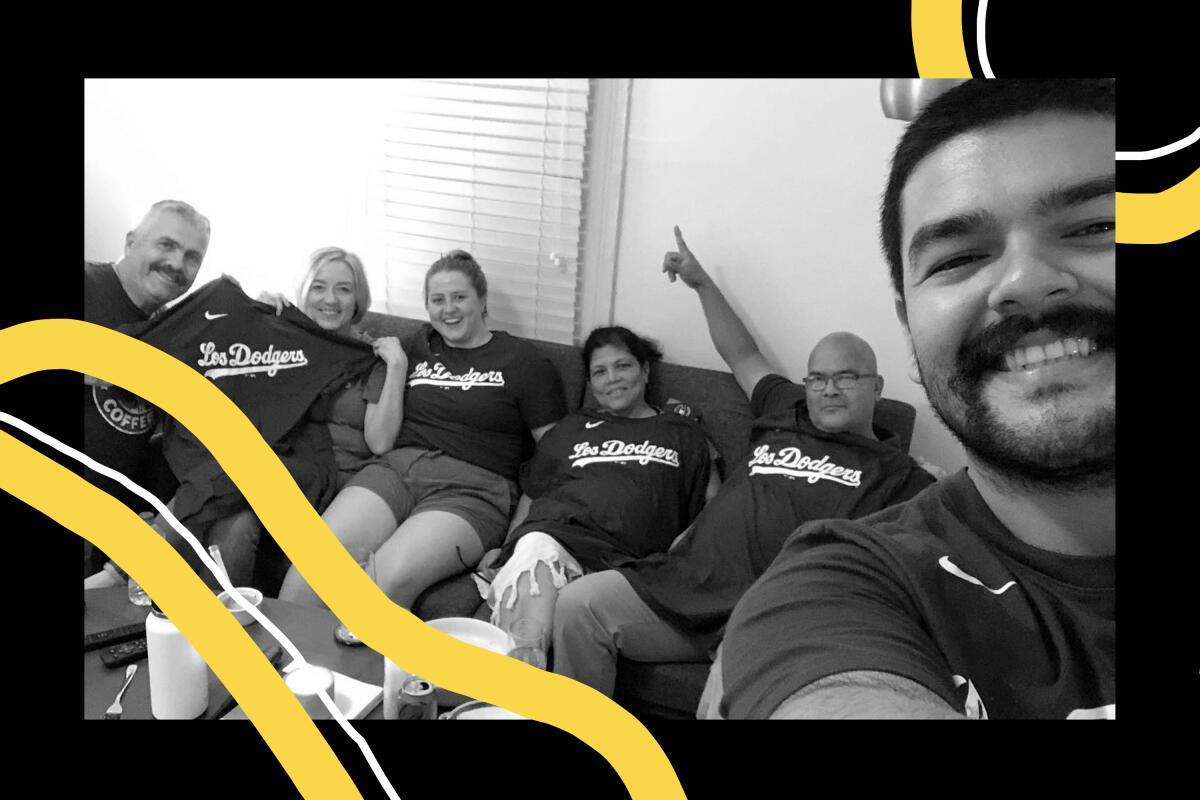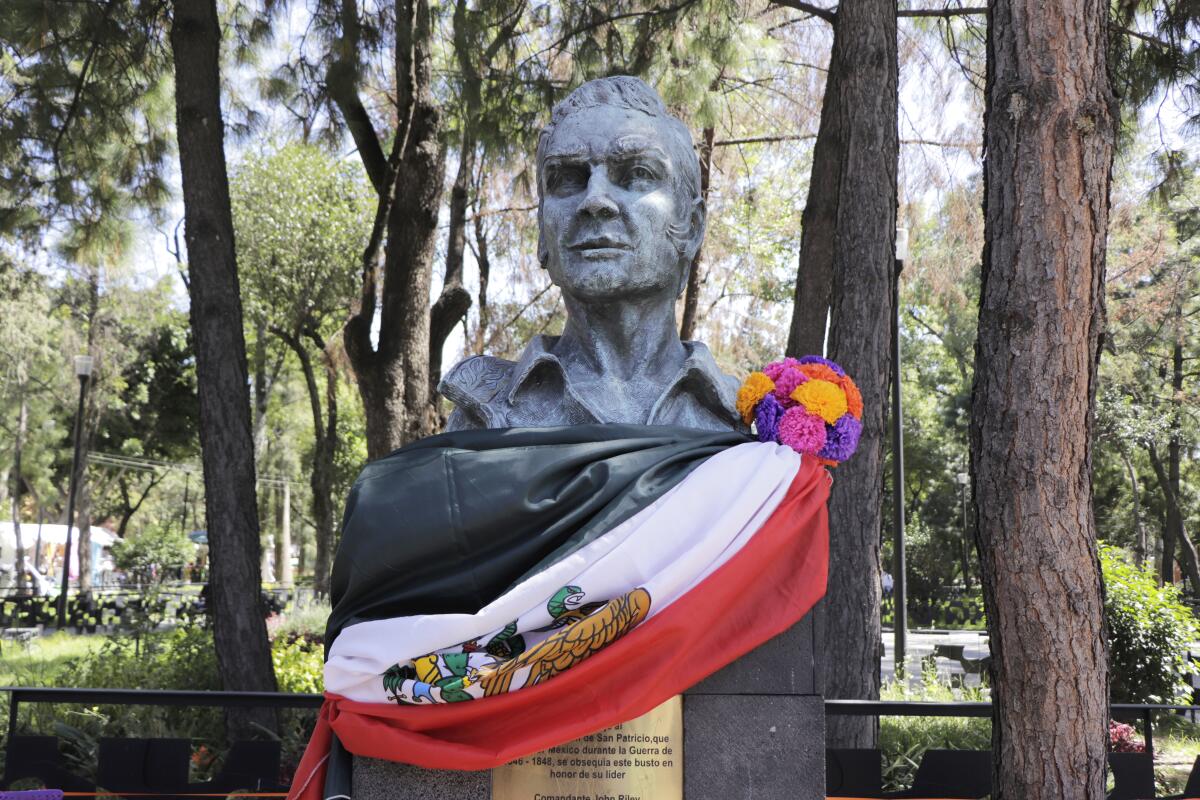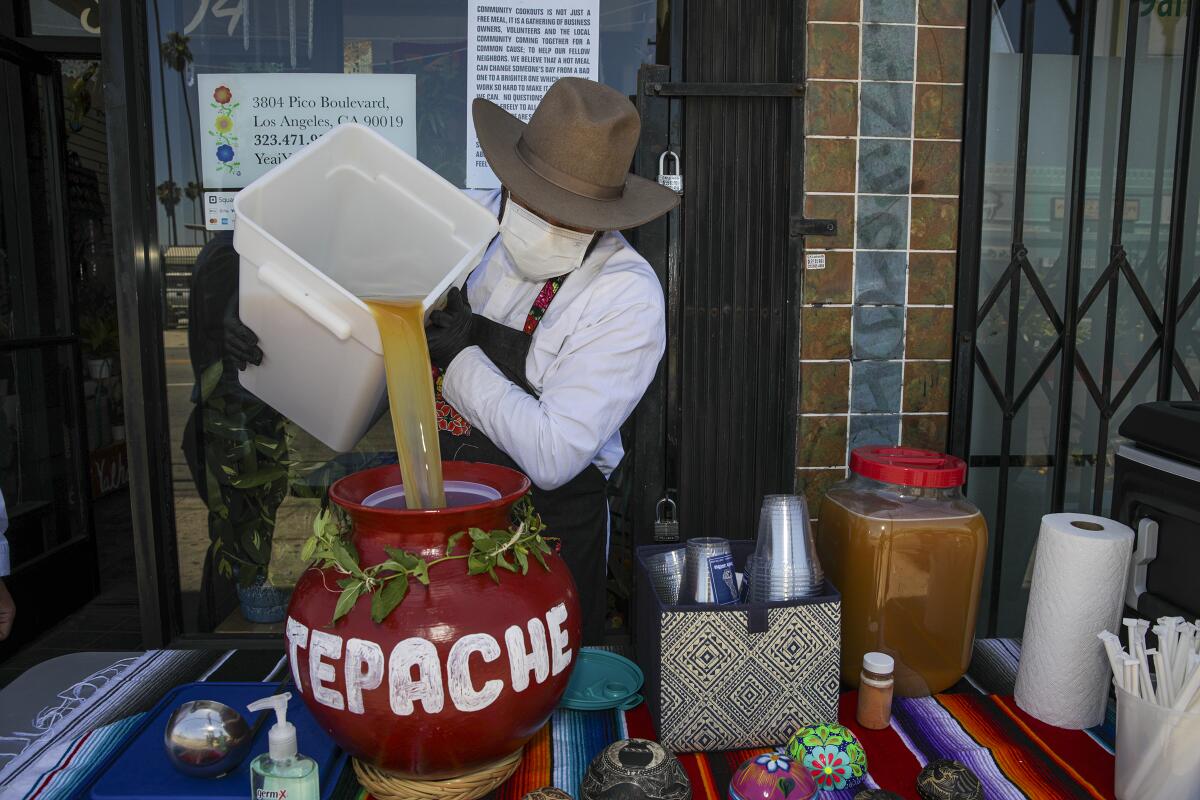Latinx Files: Greetings from Russellville, Alabama!

- Share via
Earlier this month, I put out a call for readers who live in places that aren’t traditionally known for their Latinx populations. I was inspired by a recent Pew Research Center report that examined where Latinxs are living in the United States, which gave me a great excuse to bring the “Meet our readers” segment back to the newsletter.
Among those to reply was Salvador Blanco, a 24-year-old Guatemalan American from Russellville, Ala.
Alabama isn’t exactly the first place that comes to mind when we think of Latinxs, but its Latinx population increased by more than 42% between 2010 and 2020. Russellville, a city tucked in the northwest corner of the Yellowhammer State, has a population of over 10,000 people. Of those, more than 40% are Latinx.
Perhaps not coincidentally, a poultry plant opened in the city in 1989.
Though both of his parents work at the plant, it was religion that brought Blanco to Alabama. His father served at a Pentecostal church in Los Angeles (Blanco was born in Compton), and briefly relocated to Utah in 2005 before settling in Russellville two years later, where he would start his own church.
Blanco was raised in Pentecostalism but converted to Southern Baptist while living in Alabama. His faith plays a major role in his life; Blanco is involved in his church and plans to attend divinity school.
I asked him what it was like being a person of color involved in a church whose politics have been historically conservative and at odds with social justice.
It’s all about interpretation, he says.
“The God of the Bible is one who cares about justice. That’s not a ‘woke ideology,’” he said. “I’m getting this straight from the same Bible they read.”
As our conversation progressed, Blanco acknowledged that growing up in predominantly white spaces led him to internalize feelings of shame of being Latinx, though that changed in college, where he learned more about his Guatemalan heritage and the history of his birthplace, Los Angeles.

“It’s just a product of living in the Deep South, where you’re a minority and this town is feeling the tension of morphing into this melting pot.”
The longer we spoke, the more it hit me that Blanco’s internal struggle to reconcile these different parts of his identity was nearly identical to that of his hometown.
“Russellville has like nine tiendas Latinas, three of which are Guatemalan. There’s a carniceria and everything,” he said. “But it’s also the same town that’s 30 minutes south of Florence, which is where I live and you can’t get a Jim Crow statue in front of the courthouse taken down.”

Despite this, Blanco feels a sense of hope.
“There’s a restaurant called Buen Sabor that seats like 40 people. Every time I go there, there’s at least 12 to 15 white people thoroughly enjoying the food,” he said. “Stuff like that is beautiful to me. It makes me feel like we’re moving forward.”
As we wrapped up our conversation, Blanco shared an anecdote that he says reflects the optimism he feels about where he lives. He was recently preaching to a group of middle school students. As an icebreaker, Blanco asked the group in English and Spanish about their favorite music before he began his sermon.
“This little Guatemalan girl just looks at me and says, ‘Marimba!’ No one in that group knew what that was, but I did because I’ve been able to stay attached to my culture. I was able to look that little girl in the eye and say, ‘Yes, my parents are also from Guatemala!’ Had a white person been there and asked the same question, who knows if she would have said anything.”
The Latinx experience chronicled
Get the Latinx Files newsletter for stories that capture the multitudes within our communities.
You may occasionally receive promotional content from the Los Angeles Times.
Want to be featured in an upcoming edition of “Meet our readers”? Hit us up at latinxfiles@latimes.com
Consider subscribing to the Los Angeles Times
Your support helps us deliver the news that matters most. Become a subscriber.
Recalling the Irish who fought for Mexico — St. Patrick’s Battalion
Last week, Column One Editor Steve Padilla asked if he could write a blurb to promote an upcoming Los Angeles Times Book Club event he’s moderating. Of course we said yes.
I tend to remember historical facts — I was a history major, after all — but don’t often recall when and how I learned them. One exception: the Batallón de San Patricio — St. Patrick’s Battalion. That unit’s origins and role in the Mexican-American War were so surprising, so unexpected, that even after four decades, I know exactly where I was when I learned its remarkable story — a story I’ll get to explore soon through the Los Angeles Times Book Club.
It was the early 1980s and I was working for the Hispanic Link News Service, a tiny and somewhat scrappy news organization based in Washington, D.C., and dedicated to covering the Latino community. It was late February or early March, with St. Patrick’s Day fast approaching, and our editor, knowing how newspapers love stories pegged to holidays, was delighted to syndicate a column by a young writer named Timothy O’Leary. Tim was a “dictationist,” or cub reporter, for the Washington Star and wrote about how Irish immigrants deserted the U.S. Army to fight for Mexico during the war, which started in 1846 and ended two years later with Mexico losing half of its territory. Tim explained what drove the Irish to join Mexico in battling the invaders from the north: solidarity with their fellow Catholics and resentment against the bigoted treatment they had received in the U.S.
Tim, who later went on to a successful journalism career, was the perfect person to write the piece because it allowed him to explore his own roots. His father was a second-generation Irish American, his mother a first-generation Mexican American, though you’d never guess his Mexican connection just by looking at him. Tim was tall and fair, not at all like most writers for Hispanic Link, who, rather stereotypically, tended to be short and come in various shades of brown. (Count me among them.) Our editor, by the way, was Charlie Ericksen, who is the most Chicano Norwegian guy you’ll ever meet. Charlie, now living in Encinitas, has a huge impact on my life, and I’ll be sure to tell his story another day.
The Mexican-American War does not come up in conversation often — well, at least not on this side of the border — but when it did, I’d be sure to share the story of the Irishmen who bravely took up arms for Mexico. Their story always surprised my listeners —again, at least in the U.S. In Mexico, I got a different reaction if I brought up the San Patricios, as the soldiers were called. Down there, people were surprised, but also pleased and relieved, that a norteamericano actually knew this history.

So imagine my anticipation when Donna Wares, head of the Los Angeles Times Book Club, asked if I would like to read “A Ballad of Love and Glory,” a novel by Reyna Grande set during that war. I wondered, even hoped, she would squeeze in a mention the battalion. Little did I realize that St. Patrick’s Battalion and its leader, John Riley, would play a major role in the story, along with other real-life figures, such as Mexico’s Juan Antonio de Santa Anna and Braxton Bragg of the U.S. forces. (I already disliked Bragg because he went on to fight for the Confederacy, and after reading this novel, despise him even more now.) Grande’s novel made me think of Tim as she mixed the cultures, with plenty of Irish Gaelic mixed in with the Spanish. It’s a story of war, but also a love story, with Riley falling for a young Mexican widow named Ximena.
On March 29, I’ll chat with Grande about how she learned about the San Patricios, her novel and writing in general. Before “Ballad,” she already was a best-selling memoirist. You can reserve your digital seat for our talk now. I hope you can join us to hear more about the remarkable men who formed St. Patrick’s Battalion.
Things we read this week that we think you should read
—I know it’s considered uncool to admit to liking Maná (hola, chavorucos still clinging to your Soda Stereo shirts!), but I don’t care. Their music was part of the soundtrack to my childhood. There are few moments in my life where I’ve felt more Mexican than that time I sang-yelled “Clavado en un bar” with thousands of Angelenos at the Forum during the band’s 2019 record-breaking stint.
For the Times, Tommy Calle spoke to Fher Olvera and Sergio Vallín about Maná’s ongoing residency at the famed Inglewood arena, the band’s love of Los Angeles and immigration reform.
—In case you missed it, interim food editor Daniel Hernandez recently took a deep dive into the world of Mexican fermented drinks. Looking to score some pulque, tejuino or tepache in Los Angeles? He’s got you covered.

— A word of advice for anyone who’s thinking of coming after Missy Elliott: don’t.
Just ask reggeatonero Jowell how it went for him.
— My colleague Alejandra Reyes-Velarde wrote about the Latinx electorate as it pertains to the upcoming Los Angeles mayoral race. There’s a lot of good stuff in there, some that even applies to Latinx voters in other parts of the country.
“Latinos do turn out to vote at high rates and they can be consequential in deciding elections,” said Matt Barreto, a politics and Chicano/a studies professor at UCLA. But just like everyone else, that only happens when the investment is made.
—The best thing on the Latinternet: Curious about what the upcoming Selena album will sound like? Us too. Hopefully it’s a lot better than this.
The Latinx experience chronicled
Get the Latinx Files newsletter for stories that capture the multitudes within our communities.
You may occasionally receive promotional content from the Los Angeles Times.







